
Southeastern Automation, Inc.
PO Box 22820
Knoxville, TN 37933-0820
Phone: (865) 675-3080
Fax: (865) 675-3060
www.southeastern-automation.com

| USA SALES ONLY |
|

|
Southeastern Automation, Inc. |
 |
|
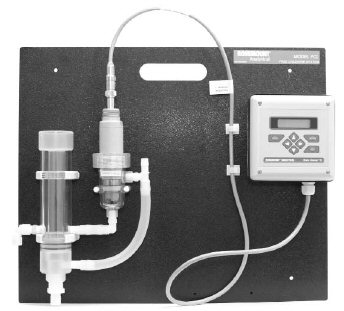
|
NEW! FCLi
The Model FCLi free chlorine system is intended for the determination of free chlorine (hypochlorous acid plus hypochlorite ion) in fresh water. Unlike free chlorine analyzers from other manufacturers, the Model FCLi does not use expensive sample conditioning systems or messy reagents to control pH. Nor, does it require an auxiliary pH sensor for pH correction. Instead, the pH adjustment takes place inside the sensor, producing a signal that changes less than 4% per unit change in pH between pH 6.5 and 10. Below pH 6.5 the change is less than 1%. The linear range of the sensor is 0 to 20 ppm (mg/L). The Model FCLi is not intended for the determination of total or combined chlorine (like monochloramine). Nor, can the FCLi be used for the determination of chlorine in seawater. The Model FCLi uses a three electrode, membrane-covered amperometric sensor. The sensor consists of a hydrophilic membrane stretched over a gold mesh cathode. A silver/silver chloride reference electrode and an external copper auxiliary electrode complete the circuit. The fill solution is saturated succinic acid slurry. During operation, an electrochemical reaction, driven by the polarizing voltage, consumes free chlorine at the cathode surface. The auxiliary electrode provides the electrons for the cathode reaction, and a current proportional to the reaction rate flows between the electrodes. Because the concentration of chlorine at the cathode is zero, free chlorine in the sample continuously diffuses through the membrane and is destroyed at the cathode. Thus, the cathode current is proportional to the diffusion rate, which is proportional to the concentration of free chlorine in the sample. Unlike other free chlorine sensors, the FCLi sensor requires neither sample pretreatment nor pH correction. All amperometric free chlorine sensors generate a raw current that depends primarily on the concentration of hypochlorous acid. Because the fraction of free chlorine present as hypochlorous acid is a function of pH, readings will be in error if the sample pH changes from the value it had during calibration. To correct for pH changes, some manufacturers treat the sample with acid to convert hypochlorite to hypochlorous acid. Others continuously measure the pH and use the pH value to correct the chlorine sensor reading. The Model FCLi is different. The sensor uses a highly buffered acidic fill solution for internal pH adjustment. The fill solution converts all the free chlorine entering the sensor as well as much of the free chlorine at the outside surface of the membrane into hypochlorous acid. Thus, the sensor response is practically independent of pH. For customers who wish to measure pH, an option that includes a pH sensor and flow cell is available. Maintenance is fast and easy. Replacing a membrane requires no special tools or fixtures. A screw cap holds the pre-tensioned membrane in place. Replacing the membrane and fill slurry takes only a few minutes. The Model FCLi includes the easy-to-use Model 1055 analyzer. The analyzer features two fully programmable 4-20 mA analog outputs and three fully programmable alarm relays. Programming and calibration is simple and intuitive. The backlit, two-line display allows the user to read chlorine (and pH) at a single glance. Valves, rotameters, and pressure regulators to control sample flow are things of the past with the the Model FCLi. A constant head overflow sampler ensures the correct flow to the sensor no matter how much the sample flow or pressure changes. To eliminate wiring hassles, quick disconnect Variopol cable is standard. |
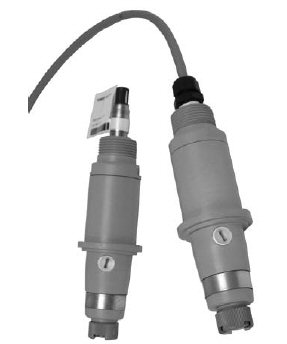
|
NEW! 498CL-01
pH-Independent Free Chlorine Sensor The Model 498CL-01 sensor is intended for the continuous determination of free chlorine (hypochlorous acid plus hypochlorite ion) in water. The primary application is measuring chlorine in drinking water. The sensor can also be used to monitor dechlorination. The sensor requires no acid pre-treatment, nor is an auxiliary pH sensor required for pH correction. Between pH 6.5 and 10 the chlorine reading decreases less than 4% per unit increase in pH. Below pH 6.5 the change is less than 1%. The linear range of the sensor is 0 to 20 ppm. For determination of higher levels of chlorine, consult the factory. The 498CL-01 is a three electrode, membrane-covered amperometric sensor. The sensor consists of a hydrophilic membrane stretched over a gold mesh cathode. A silver/silver chloride reference electrode and a copper auxiliary electrode complete the circuit. The fill solution is saturated succinic acid. During operation, an electrochemical reaction, driven by the polarizing voltage, consumes free chlorine at the cathode surface. The auxiliary electrode provides the electrons for the cathode reaction, and a current proportional to the reaction rate flows between the electrodes. Because the concentration of chlorine at the cathode is zero, free chlorine in the sample continuously diffuses through the membrane to be destroyed at the cathode. Thus, the current is proportional to the diffusion rate, which is proportional to the concentration of free chlorine in the sample. Unlike free chlorine sensors from other manufacturers, the 498CL-01 requires neither sample pretreatment nor pH correction. All amperometric free chlorine sensors generate a raw signal that depends primarily on the concentration of hypochlorous acid. Because the fraction of free chlorine present as hypochlorous acid is a function of pH, readings will be in error if the sample pH changes from the value it had during calibration. To correct for pH changes, some manufacturers treat the sample with acid to convert hypochlorite to hypochlorous acid. Others continuously measure pH and use the result to correct the raw chlorine signal. The 498CL-01 is different. It uses a highly buffered acidic fill solution for internal pH adjustment. The fill solution converts all the free chlorine entering the sensor as well as much of the free chlorine at the outside surface of the membrane into hypochlorous acid. Thus, the sensor response is practically independent of pH. Because the rate of diffusion of free chlorine through the membrane depends on membrane permeability, the sensor response must be corrected for changes in permeability caused by temperature. A Pt 100 RTD in the sensor measures the temperature, and the analyzer automatically performs the correction. Stable dilute chlorine standard are generally not available, so the sensor must be calibrated against the results of a laboratory test run on a grab sample of the process liquid. Portable test kits are available from other manufacturers. Maintenance is fast and easy. Replacing the membrane requires no special tools or fixtures. Replacing the succinic acid slurry is also simple. Maintenance takes at most a few minutes. The sensor cannot be pressurized. Sample must drain to open atmosphere. A low flow cell is available, and its use is highly recommended. The 498CL-01 sensor is available with a Variopol (VP) watertight connector. Wire the interconnecting cable to the analyzer and run the cable to the sensor. The sensor plugs into the cable receptacle. To replace the sensor, simply disconnect the Variopol fitting and plug in a new sensor. |
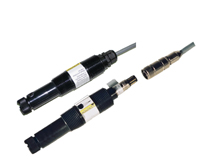
|
MODEL 499ACL-01 FREE RESIDUAL CHLORINE SENSOR |

|
MODEL 499ACL-03 MONOCHLORAMINE SENSOR |

|
Chlorine System - Total Free Chlorine (450) |
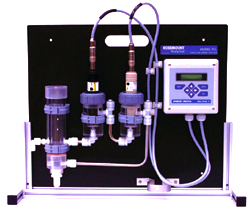
|
Free Chlorine System with Sensor, Analyzer, Cable, Flow Control & Back Plate (FCL) |

|
Monochloramine System with Sensor, Analyzer, Cable, Flow Control & Back Plate (MCL) |

|
Reagent-based Chlorine System (SCS921A) |

|
pH/ORP, Conductivity, Oxygen, Ozone, or Chlorine 2-Wire Transmitter (5081) |
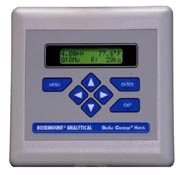
|
pH/ORP, Conductivity, Oxygen, Ozone, or Chlorine 2-Wire Transmitter (XMT) |

|
Solu Comp II Analyzer (1055) |
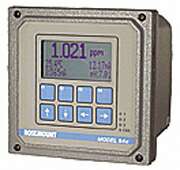
|
Amperometric HART Analyzer (54eA) |